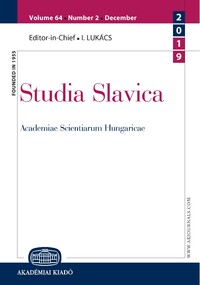Десять темных мест в поэзии О. Мандельштама: комментарии и расшифровка
Ten Dark Places in O. Mandelstam’s Poetry: Comments and Transcript
Author(s): Vasily Pavlovich MoskvinSubject(s): Russian Literature
Published by: Akadémiai Kiadó
Keywords: poetic speech; poetics; O. Mandelstam; semantic transfer; verbal image; Heraclitic metaphor; obscurity of speech; hermetic text
Summary/Abstract: A number of solutions are proposed that shed light on the dark and controversial passages in ten poetic texts of the outstanding Russian and Soviet poet O. Mandelstam. The existing interpretations of such passages in modern special literature are critically analyzed. The tactics that implement the characteristic for late Man- delstam “orientation to riddle” (O. Ronen) are identified, the basic functions of this orientation in his poetics are determined. As the analysis has shown, the main of these tactics is a metaphor that is in various ways darkened, and therefore allows for variability of interpretations, or is more or less hermetic, i.e. closed to an exhaustive and unambiguous interpretation. Such “dark” metaphors, the main subject of which does not lend itself to confident explication, the poet called “heraclitic”. The paper provides arguments in favour of the fact that the internal form of the term heraclitic metaphor goes back to the nickname of the early antique Greek philosopher Heraclitus of Ephesus – σκοτεινός ‘dark’. Among the applied by O. Mandelstam methods of darkening of semantic transfers were the most popular, and therefore characteristic for his author’s idiostyle: 1) the lack of context, in particular, the non-closed nature of metaphors of type mentioned above; 2) carefully “hidden”, i.e., as a rule, no more than a one-word, allusive reliance on a precedent text, often little-known, and therefore inaccessible to a wide readership; “disguised” indication of a separate element (or elements) of the actual for the poet everyday or historical consituation, based on which an adequate understanding of the text can be achieved. This means that the interpretation that more or less corresponds to the author’s intention obligatorily involves the use of contextual, consituative, or intertextual analysis of the semantic transfers constructed by the poet, in particular, “heraclitic metaphors”, while the analysis of semantic transfers obligatorily requires the use of transformational analysis. Accordingly, the researcher’s remoteness from the above-mentioned linguistic methods, primarily from experimental, i.e., distributive and transformational analysis, if not de- prives of a clear perspective, then significantly complicates further hermeneutical understanding of the cre- ative heritage of the late Mandelstam, i.e., those texts that were written by him after 1920. The study has shown that the darkness of a number of such texts which sometimes comes close to the sphere of hermeticism has a certain functional justification. “Orientation to riddle”, or, in ancient terminol- ogy, “dark hint” (κάλυμμα, συγκάλυμμα), in the vast majority of cases is used in the poetic texts of O. Man- delstam not as a familiar attribute of the Aesop language (opinion of N. Struve) but for aesthetic purposes, i.e. as a technique that gives the text an emotionally minor, stylistically elevated, often prophetic shade, the character of Enigma.
Journal: Studia Slavica Academiae Scientiarum Hungaricae
- Issue Year: 65/2020
- Issue No: 1
- Page Range: 129-147
- Page Count: 19
- Language: Russian
- Content File-PDF

